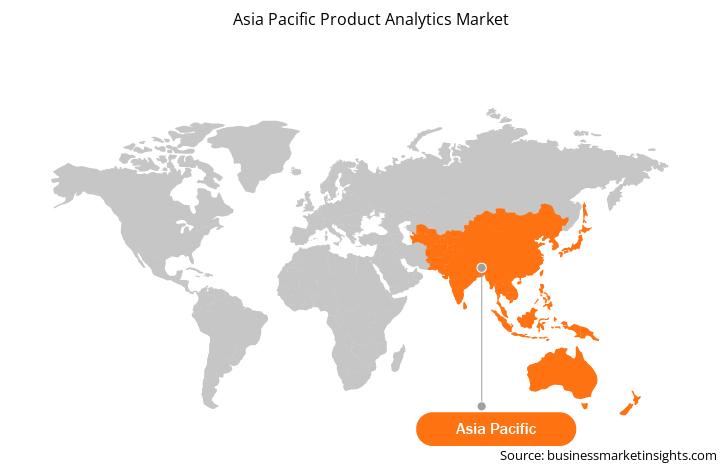Data management and analytics technologies are becoming essential in coping with the current disruption and ushering in the new normal. The data on the COVID-19 status of each country and region is publicly available. Even municipal-level data can be found on the internet. Product analytics may link this data with supply chain information to identify risk areas and estimate a region's duration to resume normal operations.
By monitoring the liquidity status of client companies through a real-time cash liquidity view, all of this data can assist financial institutions in minimizing risks. Companies in the energy business can use IoT to monitor equipment remotely and give data for preventative and predictive maintenance, eliminating the need for staff to travel to remote areas. More enterprises are going to the cloud in the post-COVID-19 era to maximize insights from data and big data analytics, which has become a requirement for businesses. In the coming years, product analytics is expected to play a significant role in business development as it allows companies to correlate more data, such as government health data, to predict the demand.
The COVID-19 pandemic has not only disrupted the overall economy in APAC but has also changed the buyers’ attitude toward the various industry verticals. A rise in consumer demand for expensive features in products and services and a “new normal” way of living persuaded brands to start investing in online marketplaces to drive store visits. As a result, the businesses are adjusting their strategies, according to the changes in consumer behavior and many are going through a digital and e-commerce transformation. The market rebound in the last few months is encouraging the growth of product analytics solutions. Countries in the APAC region are anticipated to harness the potential of AI, IoT technologies, and digitalization. Southeast Asian nations such as Indonesia launched a capacity-building programmed to expedite digitization among micro, small, and medium enterprises. A customer’s interaction with a company in times of crisis can trigger an immediate effect on the sense of trust and loyalty. Thus, product analytics leaders are focusing to cater to the longer-term shifts in consumer behavior that result from this crisis. Demands for real-time monitoring and analysis of changing customer preferences are anticipated to boost the APAC market in the post-pandemic era. Access to real-time data is important for the e-commerce businesses in the APAC region to accelerate their sales, promotions, and orders in the post-pandemic era.
With the new features and technologies, vendors can attract new customers and expand their footprints in emerging markets. This factor is likely to drive the APAC product analytics market. The APAC product analytics market is expected to grow at a good CAGR during the forecast period.
Strategic insights for the Asia Pacific Product Analytics provides data-driven analysis of the industry landscape, including current trends, key players, and regional nuances. These insights offer actionable recommendations, enabling readers to differentiate themselves from competitors by identifying untapped segments or developing unique value propositions. Leveraging data analytics, these insights help industry players anticipate the market shifts, whether investors, manufacturers, or other stakeholders. A future-oriented perspective is essential, helping stakeholders anticipate market shifts and position themselves for long-term success in this dynamic region. Ultimately, effective strategic insights empower readers to make informed decisions that drive profitability and achieve their business objectives within the market.

| Report Attribute | Details |
|---|---|
| Market size in 2021 | US$ 1,870.59 Million |
| Market Size by 2028 | US$ 6,311.93 Million |
| Global CAGR (2021 - 2028) | 19.7% |
| Historical Data | 2019-2020 |
| Forecast period | 2022-2028 |
| Segments Covered |
By Component
|
| Regions and Countries Covered | Asia-Pacific
|
| Market leaders and key company profiles |
The geographic scope of the Asia Pacific Product Analytics refers to the specific areas in which a business operates and competes. Understanding local distinctions, such as diverse consumer preferences (e.g., demand for specific plug types or battery backup durations), varying economic conditions, and regulatory environments, is crucial for tailoring strategies to specific markets. Businesses can expand their reach by identifying underserved areas or adapting their offerings to meet local demands. A clear market focus allows for more effective resource allocation, targeted marketing campaigns, and better positioning against local competitors, ultimately driving growth in those targeted areas.

APAC Product Analytics Market – By Component
APAC Product Analytics Market – By Mode
APAC Product Analytics Market – By Vertical
APAC Product Analytics Market, by Country
The Asia Pacific Product Analytics Market is valued at US$ 1,870.59 Million in 2021, it is projected to reach US$ 6,311.93 Million by 2028.
As per our report Asia Pacific Product Analytics Market, the market size is valued at US$ 1,870.59 Million in 2021, projecting it to reach US$ 6,311.93 Million by 2028. This translates to a CAGR of approximately 19.7% during the forecast period.
The Asia Pacific Product Analytics Market report typically cover these key segments-
The historic period, base year, and forecast period can vary slightly depending on the specific market research report. However, for the Asia Pacific Product Analytics Market report:
The Asia Pacific Product Analytics Market is populated by several key players, each contributing to its growth and innovation. Some of the major players include:
The Asia Pacific Product Analytics Market report is valuable for diverse stakeholders, including:
Essentially, anyone involved in or considering involvement in the Asia Pacific Product Analytics Market value chain can benefit from the information contained in a comprehensive market report.